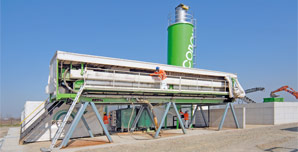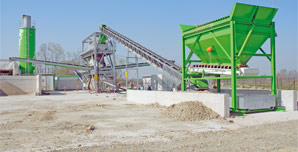When soil contains a predominant inert lithoid fraction, we can consider separating the contaminated colloidal fraction from the uncontaminated larger-size granules using wet treatment methods.
This separation removes the hazardous contaminants from the soil and concentrates them in a reduced volume. Washing separates out from the sand or gravel from the fine or contaminated fraction of the soil (or waste), which can undergo further treatment using authorised systems; when treatment is complete, most of the contaminants are concentrated in the fine fraction, whose disposal method is determined on a case-by-case basis.
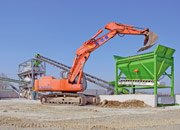
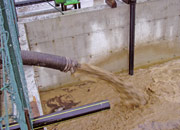
The washed inert material is characterised separately and handled:
- as a product, if it meets the criteria for release as established in Annex 3 of Italian Ministerial Decree 186/2006;
- as waste, if it does not meet the aforesaid criteria for release.
In the latter case, the matrices to be handled as waste are sent for recovery or disposal at appropriate facilities.
The Treatment Process
A simplified flow chart of the process:
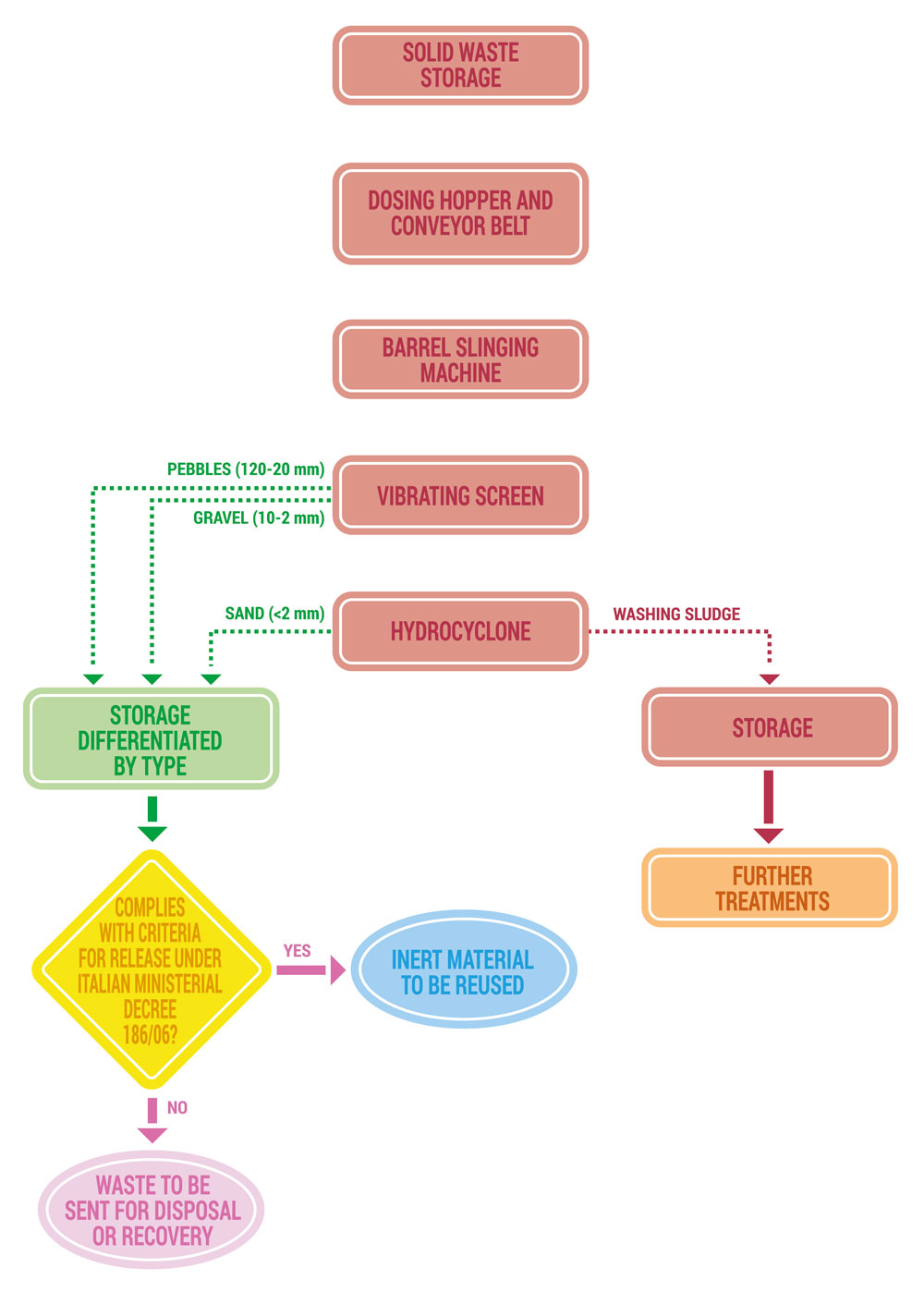
In the first step of treatment, the soil is excavated, then held in a staging area near to the treatment equipment.
The soil is subsequently sifted to separate out the larger debris.
The particles that do not pass through the screen are sent to the scrubbing unit, where they are mixed with a washing solution and agitated. As previously noted, the washing solution consists of water but may also contain additives like detergents, surfactants or acidic buffers to improve its effectiveness at removing contaminants from the soil.
Upon exiting the scrubbing unit, the sand and gravel are screened out of the wash water slurry (water containing contaminated silt and clays).
When the process is complete, the inert materials are checked for contaminants; these materials can then be used for backfill on site (or undergo another washing cycle if necessary).
The wash water slurry, which contains the contaminants, is treated to separate out, once again, from the wash water the silt and clays, which contain the majority of contaminants. On a case-by-case basis it is determined whether the silt and clays could be put through further treatments to render them suitable for recovery or whether they should be sent for disposal.
The wash water, on the other hand, can be reused for numerous treatment cycles. Only at the end of the process is it purified (possibly on site) and discharged into the sewage system.
